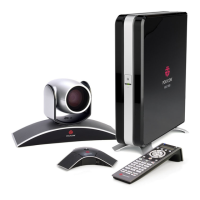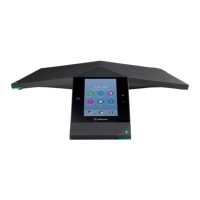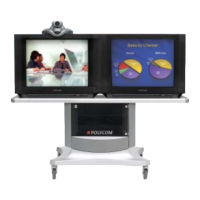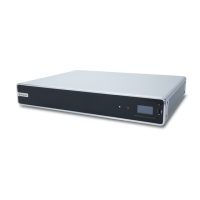Statistics and Diagnostics
Polycom, Inc. 11–11
Call Number 2
(If applicable for
call)
For outgoing calls — The number dialed from the second
call field, not necessarily the transport address.
For incoming calls — The caller ID information from the
second number received from a far site.
Transport Type The type of call — Either H.320 (ISDN), H.323 (IP), or SIP.
Call Rate The bandwidth negotiated with the far site.
System
Manufacturer
The name of the system manufacturer, model, and software
version, if they can be determined.
Call Direction In — For calls received.
Out — For calls placed from the system.
Conference ID A number given to each conference. A conference can
include more than one far site, so there may be more than
one row with the same conference ID.
Call ID Identifies individual calls within the same conference.
Total H.320
Channels Used
The total number of ISDN B channels used in the call. For
example, a 384K call would use six B channels.
Endpoint Alias The alias of the far site.
Endpoint Additional
Alias
An additional alias of the far site.
Endpoint Remote
Type
Terminal, gateway, or MCU.
Endpoint Transport
Address
The actual address of the far site (not necessarily the
address dialed).
Audio Protocol (Tx) The audio protocol transmitted to the far site, such as G.728
or G.722.1.
Audio Protocol (Rx) The audio protocol received from the far site, such as G.728
or G.722.
Video Protocol (Tx) The video protocol transmitted to the far site, such as H.263
or H.264.
Video Protocol (Rx) The video protocol received from the far site, such as H.261
or H.263.
Video Format (Tx) The video format transmitted to the far site, such as CIF or
SIF.
Video Format (Rx) The video format received from the far site, such as CIF or
SIF.
Disconnect Local ID
and Disconnect
Reason
The description of the Q.850 (ISDN) cause code showing
how the call ended.
Data Description
Artisan Technology Group - Quality Instrumentation ... Guaranteed | (888) 88-SOURCE | www.artisantg.com

